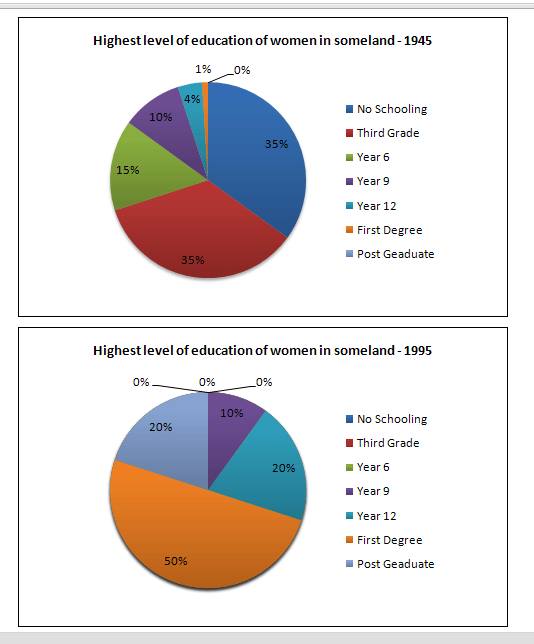The pie charts compare the proportion of education level completed by women in several regions in 1945 and 1995, a half century period. Overall, while a significant rise saw by women who schooled at the first degree level, those who were not educated and finished until the third grade saw a downward trend.
Initially, the percentage of women schooled at the first degree was fairly low, at only 1%. However, the figure increased dramatically over fifty years to represent the largest proportion at 50%, predominated over the seven groups. The proportion for both the year 12 and postgraduate were the minority in 1945, just under 5% and suddenly increase to a fifth, approximately a 20%-rise in five decades.
There was a significant decrease for either the percentage of women no schooling and the third grade, from 35% then suddenly decreased to represent zero in 1995, dissapear from the whole proportion. The percentage for those completed the year 6 experienced a 15%-decrease. The change was seen constant in the remaining groups, at one in ten throughout the period.
Initially, the percentage of women schooled at the first degree was fairly low, at only 1%. However, the figure increased dramatically over fifty years to represent the largest proportion at 50%, predominated over the seven groups. The proportion for both the year 12 and postgraduate were the minority in 1945, just under 5% and suddenly increase to a fifth, approximately a 20%-rise in five decades.
There was a significant decrease for either the percentage of women no schooling and the third grade, from 35% then suddenly decreased to represent zero in 1995, dissapear from the whole proportion. The percentage for those completed the year 6 experienced a 15%-decrease. The change was seen constant in the remaining groups, at one in ten throughout the period.

13151743_10204576017.jpg
